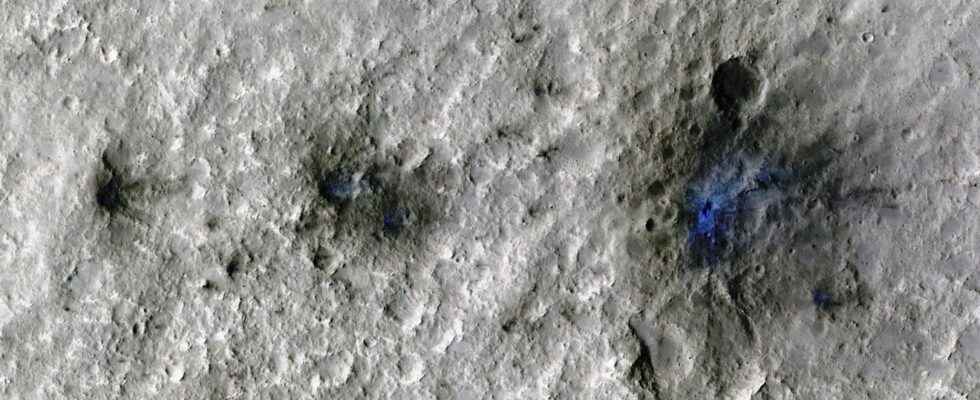Thanks to the SEIS precision seismometer, a scientific team was able to isolate the vibrations linked to four separate meteorite impacts in 2020 and 2021. This is the first time that such an event has been recorded with seismic and sonic waves.
The sonic “translation” is quite amazing.
Watch out, falling meteorites
On the great plain of Elysium Planitia (on Mars), the InSight mission continues to listen, for a few hours a day, to seismic signals from the Martian crust. In the heart of winter on site, the lander receives practically no more energy, and the one that has already doubled its initial mission duration will soon shut down for good. But the analysis of the signals sent to Earth is not over, and by far!
An article, published this Monday in Nature Geosciences, highlights an expected and yet random result: the recording of several meteorite impacts thanks to the SEIS precision seismometer. The largest of these hit Mars on September 5, 2021, less than 290 km from the lander. Shattered into 3 pieces as it entered the atmosphere, it then crashed. And thanks to information from the seismometer, the MRO orbiter (Mars Reconnaissance Orbiter) was even able to photograph the crash site! Three other impacts were found in the data on August 31, 2021, February 18, 2021 and May 27, 2020.
happy bombardment
” After three years of waiting for an impact with InSight, these craters are truly stunning! explains Ingrid Daubar, co-author of this study whose DNA is resolutely French (the main author, Dr Raphaël Garcia, is a professor at ISAE Supaero). Rocks that hit Mars have the potential to teach us more about the Martian surface crust, through the study of sonic shock wave propagation and in the rocky mantle sediments. But it also allows us to “go back in time” to better understand the nature of the Martian surface, in particular by analyzing the frequency of impacts.
Send more!
Moreover, for the moment, the InSight data challenge researchers. They know that the seismometer works very well, and they have tens of thousands of hours of Martian crust measurements at hand. However, to have detected only four impacts is low, particularly low.
Mars is a planet more exposed than Earth to meteorite strikes, due to its position closer to the asteroid belt. There are therefore theoretically many more events than what has been measured. Is it because of parasitic noises, like the wind, or the compression of atmospheric waves? Scientists hope, having identified this first “batch” of impacts, to be able to isolate others in past and present datasets.
Source : NASA

0